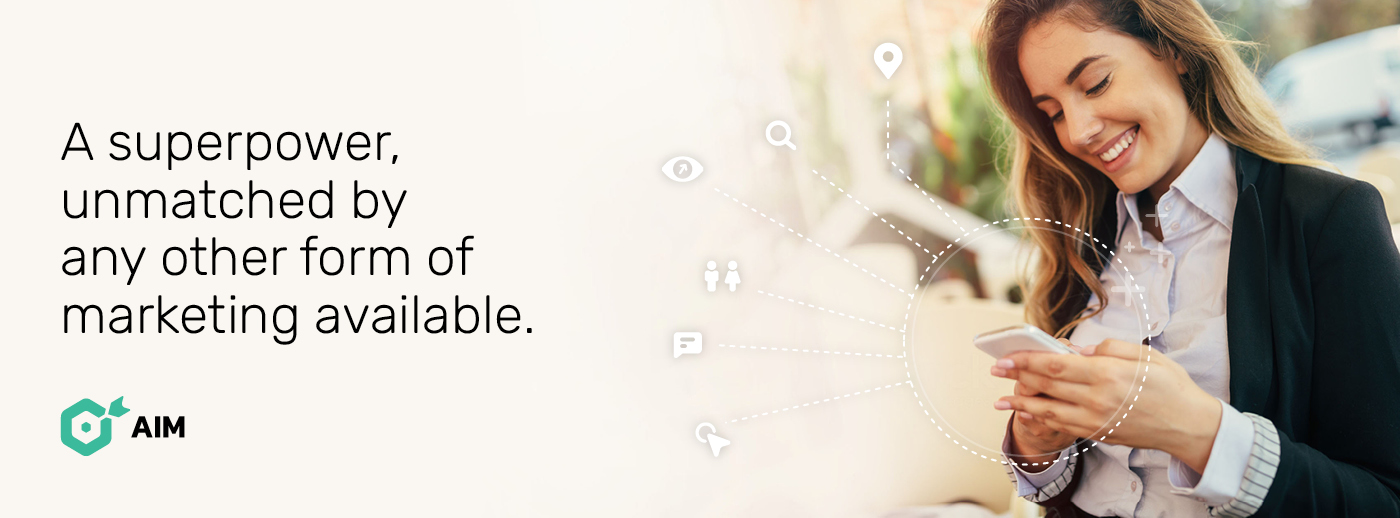Digital and social media ads have a superpower, unmatched by any other form of marketing available—and that's targeting
Targeting determines who will see your ads and is an essential element in all digital marketing campaigns. AIM has the most advanced targeting capabilities in the market and is fully automated - but how does it work?
Key areas of targeting
There are a number of controls that work together in a sophisticated ad campaign that collectively determine who will see your ads. Here are a number of key areas that broadly fall under the targeting concept, all working in concert to deliver your ads. There’s a bit to unpack here, but it's important to note that all of this is done for you by AIM.
1. Platform
Digital marketing is more than just Facebook and social media. In fact, you can only really get to about half of the market if you only use socials. So one of the key factors in targeting is to include multiple platforms, Google AND Facebook + Instagram, to get to as many of the right people as possible. On each platform, ads can be targeted so that more of the right kind of people see your ads.
2. Geographic Targeting
This is a setting that ensures that only people in relevant locations, or who are often in, or interested in those locations, will see the ads. For properties, the default targeting will typically be around the property, with (in AIM’s case) the area being covered changing depending on where you are. For example, if you are selling a property in downtown Auckland, the area around the property might be the suburb and surrounding suburbs of the property. But if selling a property in the country, the ads would be targeted over a larger region. Some solutions, such as AIM, also allow you to add additional areas to your targeting. This is a great way to do out of area targeting, which is especially relevant in a post-covid world as well as for targeting suburbs you know often draw buyers for your listings - even if they may be in other parts of the city or country. Some packages allow you to add international and interstate locations to your targeting.
3. Audience Targeting
Given how much Google and Facebook know about their users, by observing what they do online, they are very good at determining your interests. Google can also observe the type of things you are searching for, which can help targeting by matching display ads to those searches. Both platforms are very good at working out if you are actively interested in a property, and create special audiences (a collection of people) that AIM uses to reach people who are actively researching properties. AIM goes one step further and adds other types of people automatically based on what type of property you are advertising. For example, the targeting for a large house will be different to the targeting for a small unit. In addition, you can add other audiences/interests to your campaign to broaden the number of people who will likely see your ads. Most AIM products, as an example, have a list of pre-curated audiences like ‘Investors’ or ‘New Parents’ you can simply select. It’s important to remember that the ad platforms, Google & Facebook, also learn as your ads are being delivered and improve their targeting within your campaign automatically.

4. Retargeting
With AIM, some of your ads will be served to your own special audience called a remarketing (also known as retargeting) audience. This audience builds automatically as people click on your ads for any of your properties or yourself. This is a high-value audience as these are people who have actively engaged with your past ads. The more AIM you do and the larger packages you use, the larger this audience grows. A retargeting audience not only improves how your future campaigns will perform but is also an asset that you can mention in the living room to establish the superiority of your sales approach.
5. Database Targeting
AIM allows your office to load its contact database in for additional targeting. This means that the list of people who have enquired from a portal or come to your open homes, can be included in the targeting of your ads - in addition to the different types of targeting mentioned previously. This uses a Facebook feature called audience matching, where it looks for users with the email and/or phone number from your list. You need to load databases of no less than 1000 for this to work because Facebook won't let you upload and match very small lists. What's great about this capability is it allows you to show your ads for your new listings and your sales successes to these people so you are more top-of-mind right at the time they are actively searching.
Keep up with the latest trends
As an agent, you should not be afraid of targeting, unless you are trying to do it yourself. The ad platforms (Google & Facebook) are very powerful, but complex. By using a solution where all these are automated, you can take advantage of all their capabilities with no more effort than ordering a signboard. And that is the magic of technology. Keep an eye out for other articles on digital marketing, it's fascinating stuff! Learn more about how AIM can find you more buyers and sellers here.

